Here are some of the best tips for growing blueberries and getting huge harvests!
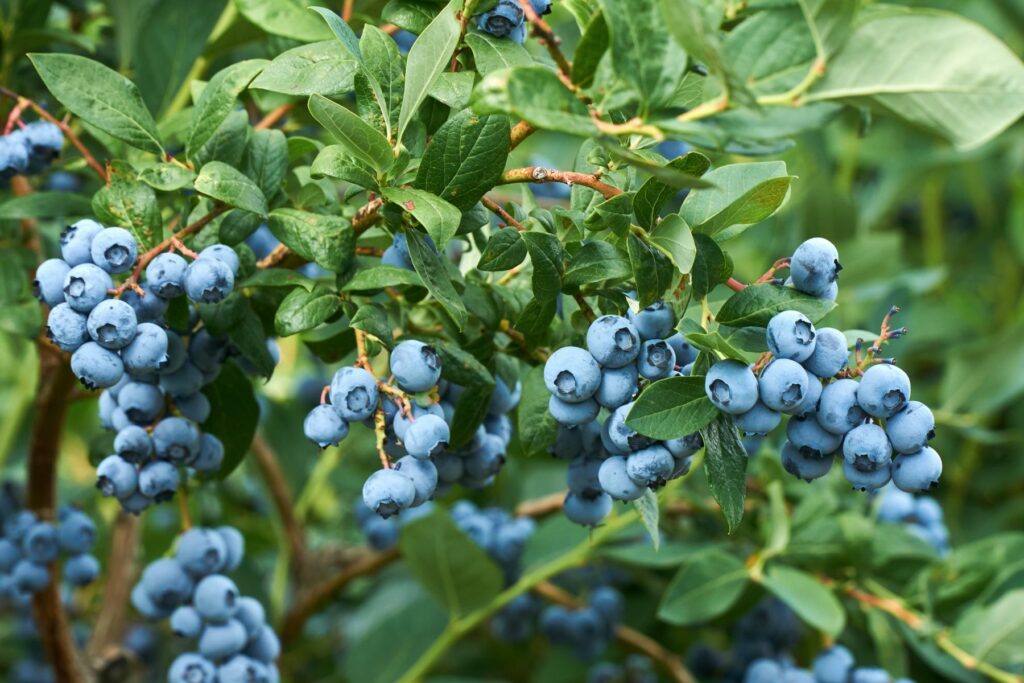
Growing blueberries can be a rewarding experience that brings the taste of fresh, juicy berries right into your garden.
This delicious fruit is known not only for its delightful flavor but also for its array of health benefits.
Growing blueberries is delicious in so many different recipes from blueberry pie, blueberry muffins, adding to smoothies and tons more!
Blueberries are perennial shrubs that thrive in well-drained, acidic soils and benefit greatly from ample sunlight.
Preparing your garden for blueberries involves choosing the right location, testing soil acidity, and making sure your blueberry plants have enough space to flourish.
Proper care, including watering, mulching, and pruning, will make sure your blueberry plants remain healthy and productive for years to come.
Whether you’re a novice gardener or an experienced green thumb, these tips will simplify the process and set you on the path to enjoying your own delicious blueberries.
Table of Contents
Selecting the Right Varieties
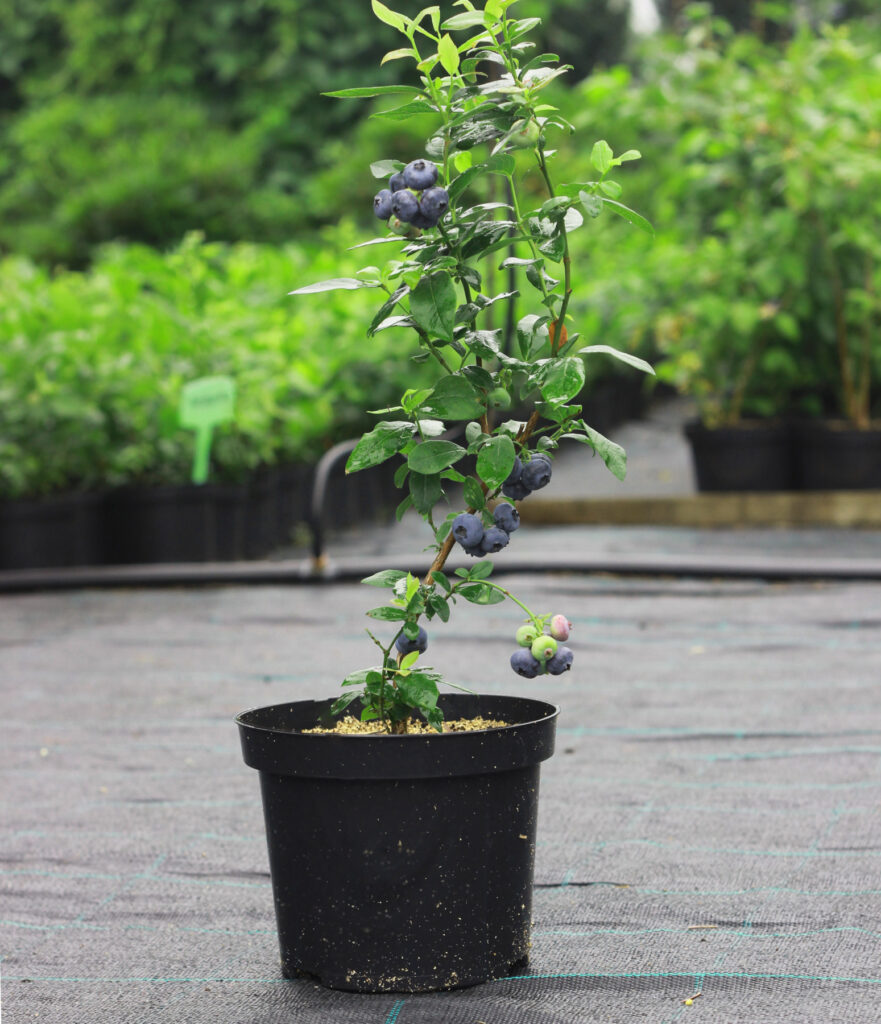
The very first thing you want to look at is making sure you choose the right varieties as choosing specific blueberry varieties that do well in your area can significantly impact your success.
Factors such as your growing zone and local pests are important to keep in mind when choosing which blueberry plants to grow.
Here’s what to keep in mind:
- Where You Live Matters: Some blueberry plants like it cold, and others like it warm. Find out which ones grow best where you live and in your growing zone.
- When Do You Want Berries?: If you pick different kinds of blueberry plants, you can get berries from late spring all the way to early fall.
- Think About the Berries: Consider what you’re looking for in a blueberry—size, sweetness, or a particular flavor for baking? Your personal taste can guide which varieties you plant.
- Ask Around: Check with local gardeners or at garden stores to see which blueberry plants do well in your area. They can offer valuable advice on which blueberry varieties perform best in your area, tailored to local challenges like pests and diseases.
With these considerations, you can make informed choices about which blueberry varieties to plant.
Plant Multiple Varieties
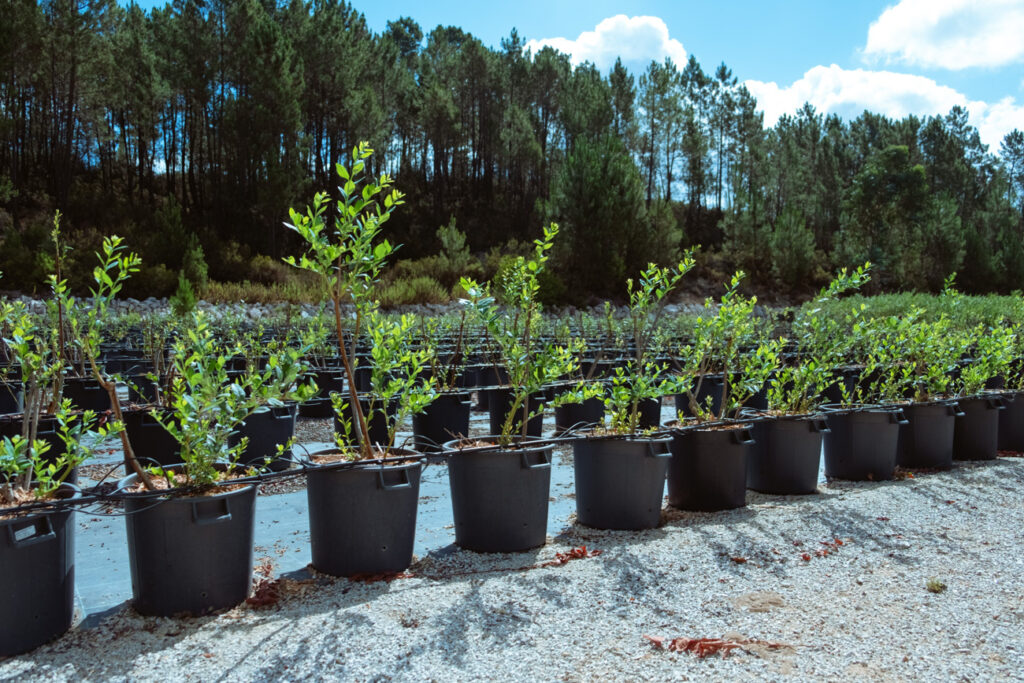
Adding a variety of blueberry plants into your garden can significantly boost your overall yield.
By selecting a mix of early, mid-season, and late-ripening varieties, you not only extend the harvest period but also enhance the cross-pollination process among the plants.
This diversity is key to achieving a more abundant and sustained harvest.
Early-ripening varieties kick off the season with their first flush of berries, mid-season varieties keep the momentum going, and adding in late-ripening ones will ensure you have fresh blueberries until early fall.
This staggered approach means your garden remains productive over a longer period, and you enjoy fresh berries throughout the summer.
Plus, cross-pollination between different varieties can improve fruit size and yield.
While some blueberry varieties are self-fertile, they often produce better when near other varieties.
Check Soil pH
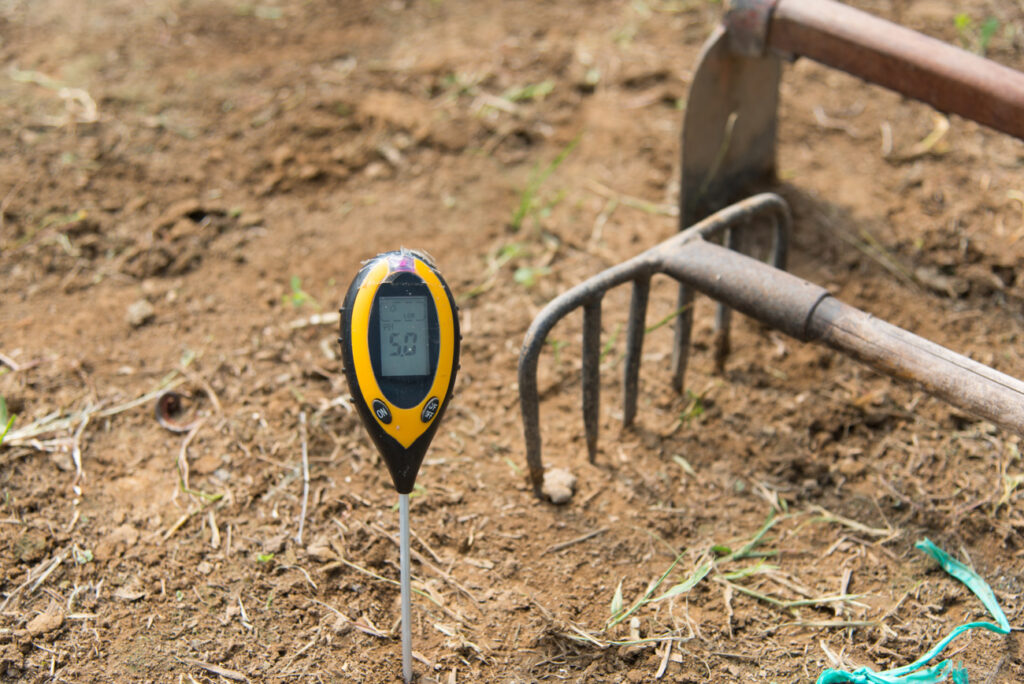
Soil pH is one of the most important factors for if you get blueberries or not. Blueberries thrive in acidic soil.
The ideal pH range is between 4.5 and 5.5.
If the soil isn’t acidic enough, blueberries won’t perform well, leading to disappointing yields and possibly even plant health issues.
If you don’t know your soil pH, then make sure to get a test kit. You can find these at a gardening center.
If your soil is too alkaline (a pH above 5.5), you can lower the pH by adding elemental sulfur to the soil a few months before planting. This gives the sulfur time to interact with the soil and adjust its acidity.
On the other hand, if your soil is already acidic, you might just need to maintain its pH by adding a layer of acidic mulch, like pine needles or sawdust, around your plants.
It isn’t a bad idea to add sulfur to your soil around your blueberries in the spring and fall when you fertilize. Also, continue to check your soil pH every spring and fall.
Soil Drainage
Proper soil drainage is important for the success of your blueberry plants.
These plants are particularly sensitive to “wet feet,” a term used to describe the condition when roots are too wet for too long. Overly soggy soil can lead to root rot and other diseases, significantly hindering plant growth and fruit production.
To achieve the best and biggest harvests, make sure your soil offers good drainage while retaining moisture.
Before planting, check your soil’s drainage by digging a hole about a foot deep and filling it with water. If the water doesn’t drain within a few hours, you’ll need to improve the drainage.
One way you can improve the drainage is to add some organic material such as compost into the soil.
This not only enhances soil structure, allowing water to drain more freely, but also improves soil health, benefiting your blueberries in the long run. For areas with persistent drainage issues, consider raising your beds.
Raised beds allow water to drain away from plant roots, preventing waterlogged conditions.
Just make sure the raised beds are large and deep enough for the blueberry plant roots to really establish themselves and spread out. Typically, a depth of 12 to 18 inches is sufficient for blueberry roots to thrive, but going up to 24 inches can provide even better conditions for root growth.
Mulching
Mulching your blueberries will help it keep the soil moist, prevent weed growth, and keep the soil temperatures stable.
For blueberries, use an acidic mulch such as pine needles, shredded pine bark, or sawdust.
These materials not only help keep moisture in and control weeds but it also helps maintain the soil’s acidity.
Apply a 2 to 4-inch layer of mulch around your blueberry bushes.
Remember to replenish the mulch layer annually.
Planting and Spacing
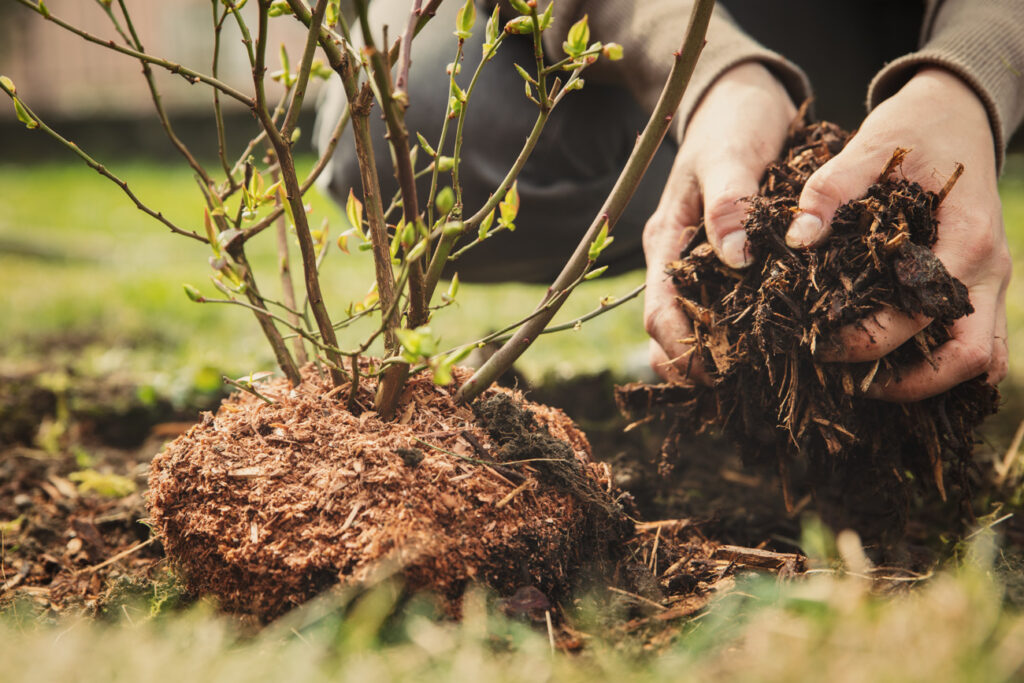
When planting blueberry plants, giving them enough space is important. Blueberries like to have room to spread out.
This space helps their roots grow strong and deep, and lets air move freely around the plants. It also makes it easier for you to walk between the plants when it’s time to pick berries or check on their health.
A good rule of thumb is to plant blueberry bushes about 4 to 6 feet apart from each other. If you’re planting more than one row, keep the rows about 8 to 10 feet apart. This might seem like a lot, but blueberry plants can get pretty big.
Watering Your Blueberry Bushes
Watering your blueberry plants the right way is important for getting a big harvest.
Blueberries like their soil to be moist, but not too wet. The trick is to give them just enough water, so their roots are happy.
During the growing season, especially when it’s dry or really hot, you might need to water them more often. A good way to check is to feel the soil. If the top inch is dry, it’s time to water.
When you water, do it slowly and deeply. This will allow the water to go deep into the soil, reaching all of the roots. Early morning is the best time to water.
This way, the plants have plenty of moisture during the day, and the leaves can dry out before it gets cool at night. Keeping the leaves dry helps prevent diseases.
Now, here’s a little trick not everyone knows about: watering your blueberries in the fall. Even after the summer ends and the growing season is over, keep giving your plants water, especially if it’s dry outside.
This helps them get ready for winter and come back strong in the spring. Healthy, well-watered plants in the fall can lead to even more berries the next year.
Remember, too much water can be just as bad as not enough.
If the soil gets soggy, the plant’s roots might rot. So, while you need to keep the soil moist, make sure it’s not waterlogged.
Fertilizing Your Plants
When fertilizing your blueberry plants, you want to use a fertilizer that’s made for plants that love acid, like azaleas, rhododendrons, or, of course, blueberries.
The best time to fertilize is in the early spring, just as the plants are waking up from winter and starting to grow. This gives them a nice boost.
You should fertilize again after the blueberry bushes are no longer fruiting.
A good rule of thumb for how much fertilizer to use is to sprinkle the fertilizer around the plant at the same diameter the plant is.
Pruning Your Blueberry Bushes
Not everyone prunes their blueberry bushes, but this would be the second most important thing (after to getting huge harvests.
You’ll want to prune your blueberry bushes when they are dormant, which is after the leaves drop up until late winter.
When you prune, you’re aiming to do a few things:
- Get rid of any dead or broken branches: These can attract pests and diseases, so it’s best to cut them off.
- Open up the plant: By removing some of the older, thicker branches from the middle of the bush, you let more light and air reach the center. This helps prevent diseases and encourages new, healthy growth.
- Encourage fruit production: Blueberries produce fruit on branches that are about one to three years old. By cutting back some of the older branches, you encourage the plant to grow new ones that will bear fruit in the future.
Here’s how to do it:
- Start by removing any branches that are dead, damaged, or look sick. Cut them right back to the base of the plant.
- Look for branches that are crossing over each other or growing inwards towards the center of the bush. These can be trimmed back to keep the bush open and airy.
- Thin out the oldest branches. If a branch is older than four years, consider removing it to make room for younger, more productive ones.
- Trim off low branches that touch the ground. This helps keep the berries clean and reduces the risk of disease.
Remember, you don’t want to over-prune; taking off too much can stress the plant. A good rule of thumb is to remove about a quarter to a third of the wood each year.
After pruning, your blueberry bushes might look a little bare, but don’t worry. They’ll grow back stronger and with more berries. Plus, this yearly “clean-up” helps keep your blueberry bushes healthy and productive for years to come.
Keep the Birds Out
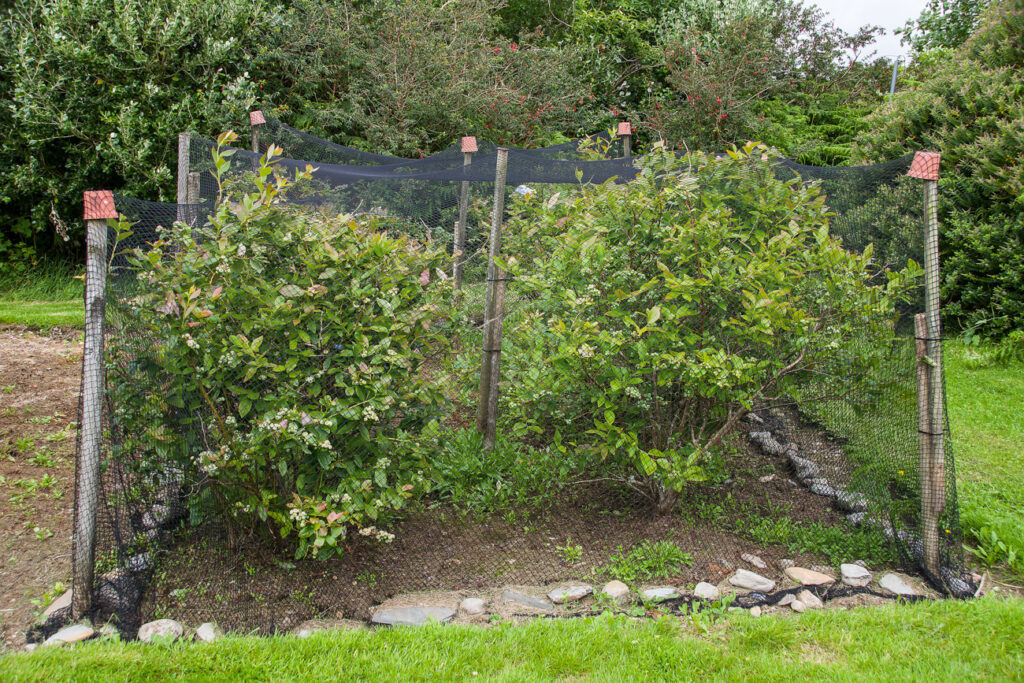
Birds are notorious for eating blueberries off blueberry bushes. Making it so you don’t get any or very few berries.
Unless, your plants are large and healthy enough, then you might just have enough to share with them and still get enough for yourself as well.
Keep more blueberries to yourself, by growing the blueberries in netting. There are many different options from netting each individual plant to building a frame around the entire patch of blueberries and covering it with netting.



